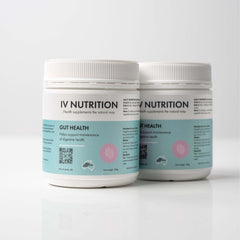Why Are More People Turning to Fibre?
In the landscape of modern health and nutrition, few topics are receiving as much renewed attention as dietary fibre. Once dismissed as little more than “roughage” for keeping the digestive system regular, fibre is now recognised as a cornerstone of metabolic, cardiovascular, immune, and gut health.
Over the past decade, there has been a surge of scientific research linking low-fibre diets to chronic illnesses ranging from type 2 diabetes to depression, and high-fibre diets to resilience, longevity, and improved quality of life. Public awareness has followed suit: food companies are reformulating products with added fibre, clinicians are prescribing prebiotic fibre supplements, and consumers are increasingly aware of their daily fibre gap.
So, why are more people turning to fibre? The answer lies in a convergence of science, lifestyle challenges, and preventive health priorities. This article explores the reasons behind the fibre movement, the clinical evidence supporting it, and how emerging options like **prebiotic fibres—especially IV Nutrition’s Virgin Manufactured Sugarcane Prebiotic Fiber—**are making it easier to close the global fibre gap.
The Fibre Gap: A Global Public Health Concern
Despite increasing awareness, fibre deficiency remains one of the most consistent dietary shortcomings worldwide.
-
In the United States, over 90% of adults fail to meet the daily fibre recommendations of 25 g/day for women and 38 g/day for men (USDA).
-
Globally, fibre intake is often less than half of recommended levels, especially in Westernised nations where refined grains and processed foods dominate.
-
This “fibre gap” is directly associated with increased risk of obesity, diabetes, cardiovascular disease, and gastrointestinal disorders.
As chronic disease rates rise, the urgency of fibre consumption has become clear—not just among clinicians, but also among everyday people seeking long-term health.
Why Fibre Matters: The Clinical Science
Fibre is far from a passive nutrient. It has active, measurable effects on multiple systems of the body.
1. Gut Health and Microbiota Support
Fibre is the primary fuel for the gut microbiota, the trillions of microbes in the colon. When fermented, fibres produce short-chain fatty acids (SCFAs) like butyrate, propionate, and acetate, which:
-
Strengthen the intestinal barrier.
-
Regulate inflammation.
-
Improve immune tolerance.
-
Influence metabolism and even brain function.
Low-fibre diets starve beneficial microbes, leading to dysbiosis, increased intestinal permeability (“leaky gut”), and systemic inflammation (Nature Reviews Gastroenterology).
2. Cardiovascular Health
Soluble fibres such as beta-glucans and psyllium reduce cholesterol absorption and improve lipid profiles. Meta-analyses confirm that higher fibre intake is linked with 15–30% lower risk of cardiovascular disease (The Lancet).
3. Blood Sugar Regulation and Diabetes Prevention
Fibre slows glucose absorption and improves insulin sensitivity. A review found that every 7 g/day increase in fibre intake reduces type 2 diabetes risk by 6% (BMJ).
4. Weight Management and Satiety
By slowing digestion and increasing satiety hormones, fibre naturally reduces calorie intake. Populations with high fibre diets consistently have lower BMI and obesity prevalence.
5. Cancer Prevention
The World Cancer Research Fund has confirmed that fibre protects against colorectal cancer. SCFAs such as butyrate suppress tumour cell growth and reduce DNA damage (WCRF).
6. Mental Health and the Gut–Brain Axis
Prebiotic fibres enhance microbial diversity, which influences neurotransmitter production. Clinical studies show prebiotics reduce anxiety and improve stress resilience (Psychopharmacology).
Why Are People Turning to Fibre Now?
With the science clear, why is fibre suddenly at the forefront of nutrition conversations? Several factors explain the shift.
Rising Awareness of the Microbiome
Over the past decade, gut microbiome research has gone mainstream. Books, documentaries, and wellness influencers have popularised the concept that gut health underpins immunity, metabolism, and mood. Since fibre is the primary fuel source for beneficial microbes, public awareness has grown accordingly.
Chronic Disease Epidemic
As rates of obesity, diabetes, and cardiovascular disease surge, people are seeking preventive strategies. Fibre is one of the simplest, most evidence-backed ways to reduce chronic disease risk.
Plant-Based and Functional Food Trends
The rise of plant-based diets and functional foods (e.g., high-fibre protein bars, fibre-enriched beverages) has shifted consumer demand. Fibre is no longer only associated with bran cereal—it’s now marketed as a performance enhancer, wellness booster, and longevity nutrient.
Concerns About Ultra-Processed Diets
Modern diets are dominated by refined grains, sugars, and oils—nutrients stripped of fibre. Consumers are increasingly aware that processed food patterns lead to deficiencies and are actively seeking fibre-rich alternatives.
Clinical Recommendations and Media Coverage
Health authorities and clinicians are amplifying the message. Recent high-profile studies in The Lancet and BMJ have reinforced the protective role of fibre, which has translated into widespread media coverage and consumer behaviour change.
Types of Fibre People Are Turning To
Soluble Fibre
-
Found in oats, legumes, apples, citrus fruits.
-
Benefits: lowers cholesterol, stabilises blood sugar.
Insoluble Fibre
-
Found in whole grains, nuts, seeds, vegetables.
-
Benefits: adds bulk to stool, prevents constipation.
Resistant Starch
-
Found in cooled potatoes, lentils, green bananas.
-
Benefits: acts as a prebiotic, supports insulin sensitivity.
Prebiotic Fibre
-
Found in onions, garlic, bananas, chicory root, sugarcane.
-
Benefits: selectively nourishes beneficial microbes, enhances SCFA production, regulates immunity.
The Unique Role of Prebiotic Fibre
Not all fibre is created equal. Prebiotic fibres are now at the centre of attention because they go beyond basic digestive support.
-
Feed Bifidobacterium and Lactobacillus, two critical gut microbes.
-
Increase butyrate production, essential for colon health.
-
Enhance immune balance, reducing allergies and inflammatory conditions.
-
Improve mineral absorption (calcium, magnesium).
Clinical research confirms that prebiotic fibre improves metabolic outcomes, gut microbiota diversity, and immune function (Nutrients).
Spotlight: IV Nutrition’s Virgin Manufactured Sugarcane Prebiotic Fiber
One reason more people are turning to fibre is the availability of advanced prebiotic supplements that are both effective and easy to integrate into daily life. Among these, IV Nutrition’s Virgin Manufactured Sugarcane Prebiotic Fiber stands out.
Why It’s Different
-
Virgin manufactured: Extracted directly from fresh sugarcane, not industrial byproducts.
-
High fermentability: Optimised for feeding SCFA-producing bacteria.
-
Gentle on digestion: Suitable for sensitive guts.
-
Clean sourcing: Sustainably produced without unnecessary additives.
Benefits for Whole-Body Health
-
Promotes regularity and prevents constipation.
-
Enhances gut microbial diversity.
-
Supports blood sugar and cholesterol regulation.
-
Reduces systemic inflammation.
-
Complements modern diets that are often fibre-deficient.
Special Offer: 100% OFF Your First Tub
You can try it risk-free with a subscription:
Claim Your Free Tub Here
This makes it an accessible, science-backed way for anyone to experience the health benefits of fibre.
Fibre Across the Life Course: Why Demand Is Rising
-
Children: Fibre reduces constipation and supports immune development. Parents are increasingly turning to fibre-rich snacks and supplements.
-
Adults: High-fibre diets help manage stress, weight, and metabolic health—key concerns for busy professionals.
-
Pregnant Women: Fibre lowers risk of gestational diabetes and preeclampsia (Nutrients).
-
Elderly: Fibre prevents constipation, reduces frailty, and maintains cognitive resilience (Frontiers in Aging Neuroscience).
This life-course relevance makes fibre universally important, and therefore universally in demand.
Practical Barriers and How People Overcome Them
Common Barriers
-
Busy lifestyles limit home cooking.
-
Processed diets lack natural fibre.
-
Some people avoid fibre due to bloating.
Solutions
-
Fibre-enriched convenience foods.
-
Gradual increases in fibre intake to allow microbial adaptation.
-
Prebiotic fibre supplements that are gentle and effective.
Future Directions: Why the Fibre Movement Will Grow
-
Personalised nutrition: Microbiome sequencing will allow fibre recommendations tailored to individual gut profiles.
-
Next-generation prebiotics: Novel fibres targeting specific microbes are under development.
-
Public health campaigns: Governments are increasingly emphasising fibre as a priority nutrient.
-
Consumer demand: With rising interest in gut health, fibre is set to remain a central feature of wellness trends.
Conclusion
So, why are more people turning to fibre? The answer lies in a combination of science, awareness, and accessibility. Fibre is no longer seen as optional roughage—it is understood as a foundational nutrient for gut, metabolic, cardiovascular, and immune health.
With modern diets leaving most people short of recommendations, the movement toward fibre is a direct response to growing health challenges. Among fibres, prebiotic varieties offer unique advantages, and supplements like IV Nutrition’s Virgin Manufactured Sugarcane Prebiotic Fiber are making it easier than ever to bridge the fibre gap.
As we look ahead, fibre is poised to become a nutritional cornerstone for preventive medicine and everyday wellness, explaining why so many people are turning to it now more than ever.





